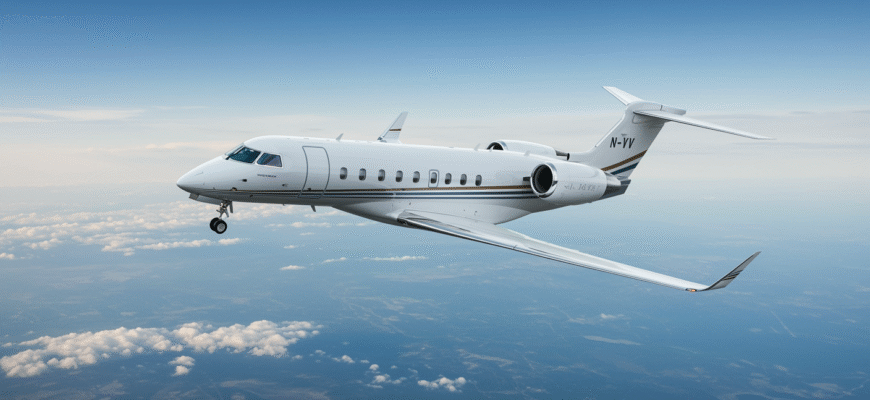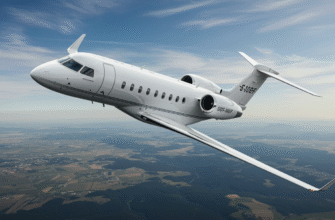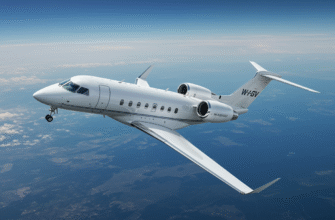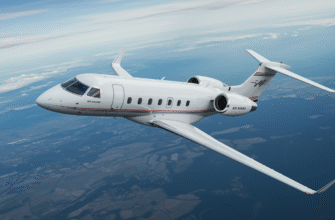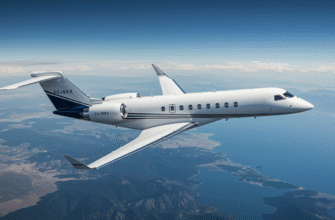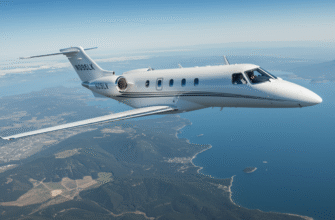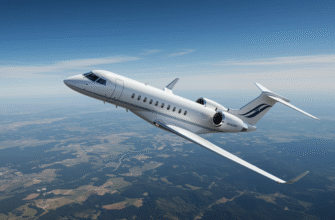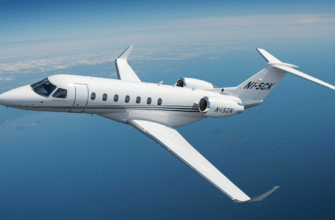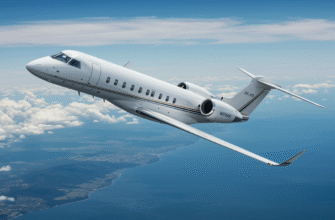Ever hear of a private jet that can fly executives to Geneva by morning and pivot to military recon by sunset? That’s the vibe with the Bombardier Challenger 604. It’s not your average airborne status symbol—it’s the jet that pilots trust and billionaires quietly cling to. Introduced in the mid-90s and flying strong ever since, the Challenger 604 has built its rep on one word: balance. It delivers long-range performance, high-speed cruise, and a wide-body cabin that’s basically a leather-wrapped condo in the sky. Business elites love the luxury, military teams love the reliability, and operators know it gets the job done—day in and day out.
This is where comfort meets muscle. With a range of 4,000 nautical miles (yes, nonstop from New York to Paris) and a max cruising speed of Mach 0.82, the 604 handles both coast-hopping and continent-crossing with ease. Add in a spacious cabin you can actually stand up in, and you’ve got a jet that lives a double life—corporate palace by day, rescue ship or radar lab by night. Widely respected, quietly legendary. It’s the jet insiders call a “workhorse in a tux.”
The Challenger 604 At A Glance
- Range: 4,000 nautical miles – from L.A. to Maui or NYC to Paris, no sweat
- Top Speed: Mach 0.82 (around 541 mph)
- Cabin Dimensions: 6’1″ height, 8’2″ width – plenty of stretch room
- Typical Seating: 7–12 in club + divan configurations
- Reputation: Trusted by heads of state, military brass, and celeb charter firms
What makes it stand out? It isn’t just the specs—it’s how they’re used. The 604 doesn’t live at airshows or in glossy brochures. It thrives in the field, where its dual identity truly shines. Whether outfitted with plush suede and espresso machines or radar domes and survival kits, this aircraft has done it all. Private buyers see it as a deep-value buy that doesn’t sacrifice quality. Meanwhile, defense outfits leverage it for sea patrol and medevac operations. Opulence when needed. Muscle when required. All in one aircraft.
Origins And Evolution Of The Challenger 604
Back in the mid-90s, Bombardier had a hunch: high-income flyers and government agencies weren’t going to settle for speed alone. They needed space, flexibility, and tech that wouldn’t age out. Enter the Challenger 604, building off the DNA of the preceding 601 model but packing plenty of upgrades that future-proofed it well past its expected shelf life.
Some big changes weren’t flashy—but mattered. The wings got a redesign for smoother lift and better fuel burn. Power came from twin General Electric CF34-3B engines, each delivering 8,729 pounds of reliable thrust. Bombardier’s vision was clear: a private jet with global range and legit runway versatility. And they followed through with a wider, longer cabin and improved avionics suite that turned pilot workload into a breeze while dialing up comfort inside.
Cabin Walkthrough: What It’s Like Inside
Step in, look around, breathe out—it’s quiet in here. And not just because of the soundproofing (though that helps a lot). The Challenger 604’s interior floats somewhere between elite boardroom and first-class lounge. Most layouts seat up to 12, usually with four club chairs up front, a divan along one wall, two single seats in the rear, and a full galley and enclosed restroom to round things out.
Yes, the divan’s nap-worthy. Yes, there’s room to walk around without shoulder-checking passengers. Sound-absorbing panels keep engine noise at bay, while the layout can be reworked depending on whether you’re flying clients or your crew. From plush carpeting to flame maple wood veneers and tailored upholstery, many owners customize interiors to match moodboards straight off Pinterest meets Monaco.
Don’t sleep on the cabin tech either:
- Standalone climate zones for passenger and crew
- LED ambient lighting upgrades
- Inflight Wi-Fi for work or binge-watching
- Touch-screen monitors and onboard entertainment controls
Passengers describe the flight experience as “whisper-quiet,” with one executive calling it “the first time I actually enjoyed being in the air longer than I needed to be.” Pilots mention its smooth handling on long legs and the cockpit’s intuitive layout. Owners love that it feels like a mobile command center—equal parts zen and zero-bull-stuff efficiency.
Range, Speed, And Reliability
Forget quick hops around the corner—this jet’s built for the long haul. With full tanks and a standard eight-passenger config, the Challenger 604 hits that magic 4,000+ nautical miles benchmark. That means business trips from Boston to London, or personal getaways from San Francisco to Honolulu, are on the table.
Its high cruising altitude—up to 41,000 feet—lets it fly high above rough weather, improving both fuel economy and passenger comfort. At cruising speed (around 459 knots), it eats up transcontinental routes with efficiency many newer jets still try to emulate.
Rugged? Absolutely. This thing tackles snow-covered tarmacs and remote island landings with the same confidence it cruises over the Atlantic. Mechanics appreciate the jet for its well-documented maintenance intervals and parts availability. Dollar for dollar, operating costs track favorably against newer options—without the teething issues that come with bleeding-edge tech.
And versus rivals? Here’s where it gets fun.
| Jet Model | Range (nm) | Cabin Width | Operating Cost/hr |
|---|---|---|---|
| Challenger 604 | 4,000 | 8.2 ft | ~$3,900 |
| Gulfstream GIV-SP | 4,100 | 7.3 ft | ~$4,300 |
| Dassault Falcon 2000 | 3,130 | 7.7 ft | ~$4,500 |
Price-to-performance? The 604 punches high. While maybe not the flashiest in class, it hits all its marks—comfort, range, reliability—with such consistency that smart buyers keep circling back. It’s built for repeat missions, not garage glam.
Cool Upgrades and Aftermarket Mods
No one wants to drop millions on a jet and still feel stuck in the mid-’90s. That’s where the Challenger 604’s upgrade potential kicks in, letting it flex way beyond its original blueprint. You’ll see it fly under radar, literally and figuratively, but don’t mistake quiet for outdated.
First up, the cockpit. Avionics upgrades are a must. Many operators swap out the older Pro Line 4 setup for the more advanced Pro Line 21 system. That’s going from dial-up to 5G—hello touchscreen efficiency, synthetic vision displays, and smoother compliance with today’s airspace demands.
Inside the cabin? It’s less jet, more upscale condo if the right team gets their hands on it. Think:
- Hand-stitched Italian leathers, burnished wood veneers, and ambient smart lighting that reacts to time of day or mood
- Upgraded galleys that look like boutique hotel minibars—fully fitted espresso machines, chilled wine drawers, gourmet plate warmers
- Full lavatory rehabs with waterfall taps, elegant tile backsplashes, and motion-sensor fixtures that scream money
Who’s grabbing these 604s and turning them into flying Pinterest boards? Everyone from boutique charter firms offering VIP-only packages to celebrity owners who don’t need a new jet, just one that feels new. Operators who know better than to spend $70M when they can get 90% of the performance—and 110% of the style—for a fraction of the cost.
From Billionaires to Battlefields: The 604’s Double Life
You wouldn’t think a jet built for plush leather seats would moonlight as a rescue platform—but the Challenger 604 can pull that off. It’s the guy who wears a tux to dinner and camo on the weekends. No kidding: it’s been rigged up for surveillance, medevac, even anti-submarine missions.
Canada’s military version, the CC-144, has been used for Arctic rescue ops. Then there’s U.S. Customs and Border Protection—with their 604 flying surveillance missions, complete with sensor pods and upgraded radars. Denmark’s fleet? Quietly packed with high-end maritime patrol gear, but still disguised as shiny business jets.
The flexibility shows in how fast it can morph its role:
- Reinforced gear that can handle gravel and icy runways
- Weaponized tech swaps like radar pods, secure comms, and advanced recon systems
- Cabin shifts that turn couches into patient stretchers within hours
In missions that demand loiter time, cabin room, and silence for sophisticated gear, the 604 steals the spotlight. With a roomy layout and über-stable ride, it becomes a data-collection lab in the sky. No one’s saying it’s the cheapest ride up there—but compared to building a bespoke spy jet? It’s a steal. And hits all the marks in a real-world pinch.
Some command centers love that it blends in. From the ramp, it just looks like a high-end corporate jet casually headed to Nice or Vegas. But inside? It’s mission-ready. Plug-and-play sensors, encrypted routers, and floor space to roll out a medevac cot in 30 minutes. No time wasted.
Its battle-readiness doesn’t shout. Which is exactly what makes it dangerous—in the best way.
Why It’s Aviation’s Best-Kept Secret
What do you do with a jet that ticks every box and still gets overlooked? You fly it quietly, laugh when people doubt it, and walk away knowing you got the smarter deal. That’s the Challenger 604 in a nutshell.
Sure, it’s not brand spanking new. That’s part of the charm. It flies just as far as some $70M Gulfstreams and doesn’t need a temperamental maintenance crew to keep it cheerful. The resale value’s sweet for sure, but it’s the peace of mind that really sells. It just… works. And keeps working.
You’ll still catch heads turning at major airfields. Not because it’s the flashiest bird—but because it’s the one that knows what it’s doing. When reliability outranks buzz, and function beats flash, the 604 becomes the smart pilot’s favorite toy.
